The Healing Powers of Epsom Salt
Epsom salt is a traditional remedy that has been used for many centuries. Many cultures have their own uses for this versatile salt. It is said to have many benefits in many aspects of life. They are useful both around the house, the garden, as well as in the body. The best part about Epsom salts is that they are inexpensive and many businesses sell them in bulk. If you are looking for a cleansing detox, taking a bath with Epsom salts will provide you with many health benefits.
The salts get their name from a saline spring which is in the city of Epsom in Surrey, England. Epsom salts are different from other types of salts because they are made of a compound of sulfate and magnesium that occurs naturally. The use of these minerals in your body can work to provide you with a refreshing detox.
Both sulfate and magnesium are easily absorbed by your skin. They then enter your blood stream. Every day, your body absorbs vitamins through your skin while releasing toxins inside and outside of your body. Epsom salts help to aid this bodily process through a function that is often referred to as reverse osmosis. The salts will help remove toxins from your body while pumping their natural minerals into your body. Magnesium is essential for overall health and has the ability to help 325 different types of enzymes function the way they should.
These enzymes have many functions including improving your circulation, helping your nervous system function, keeping your muscles healthy and helping to reduce inflammation. Sulfates are equally important minerals because they help your body keep your joints, nervous tissue and skin very healthy. Since Epsom salts are such a rich source of these minerals, they are a fantastic way to ensure that your body has the right amount of both magnesium and sulfate. When you have healthy levels of magnesium and sulfate, your body will be able to remove toxins from your body quickly and with ease.
People who regularly use Epsom salts will see an improvement of a variety of health issues. These issues include fungal infections like athlete’s foot as well as injuries like sprains and sore muscles. People who suffer from diseases or injuries that cause chronic pain use Epsom salts to help them remove toxins and alleviate inflammation in their bodies while promoting a healthy balance of minerals.
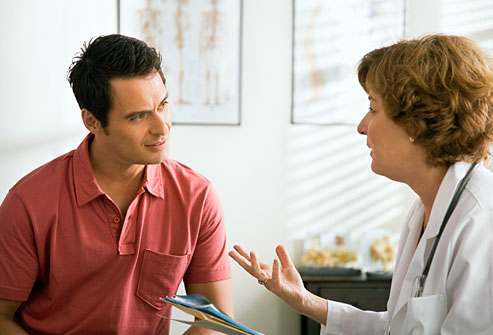 You should not use these salts if you are currently pregnant, have serious open flesh wounds or you are severely dehydrated. You should also ask your doctor before using Epsom salts if you have any kind of cardiovascular disease.
You should not use these salts if you are currently pregnant, have serious open flesh wounds or you are severely dehydrated. You should also ask your doctor before using Epsom salts if you have any kind of cardiovascular disease.
Taking an Epsom salt bath is very easy. You will need to allow yourself forty minutes to soak in the bath. The first twenty minutes will be spent removing toxins and the last twenty minutes are spent absorbing the minerals from the salt in the water.
You begin by filling up your bathtub with warm, filtered water. Then you will add the Epsom salts to the water. If you are bathing a child under 60 pounds, you will add only ½ of a cup of Epsom salts to the bath.
If you weigh between 60 and 100 pounds, you will add a full cup of salts. If you weight between 100 and 150 pounds, you will add 1.5 cups of salts. You will continue to add an extra ½ cup of salt for every 50 pounds that you add. You might also try to add some olive oil to the bath as this will have many benefits for your skin. Olive oil provides antioxidants that are beneficial to your health. Some people also add cayenne pepper or ginger which will help aid detoxification in your body.
You should never use soap when you are taking an Epsom salt bath because the soap may interfere with the whole process. After the bath, try to relax for a few hours. Although if you have arthritis, you should stay active after the bath to stop congestion building up in your joints.

 Subscribe Now
Subscribe Now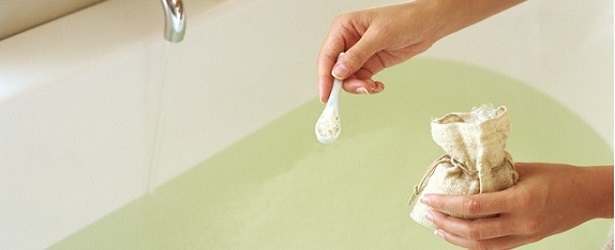


 You should take care of your feet by wearing good shoes. Your shoes should let air in so that moisture does not build up on the inside of your shoes.
You should take care of your feet by wearing good shoes. Your shoes should let air in so that moisture does not build up on the inside of your shoes.
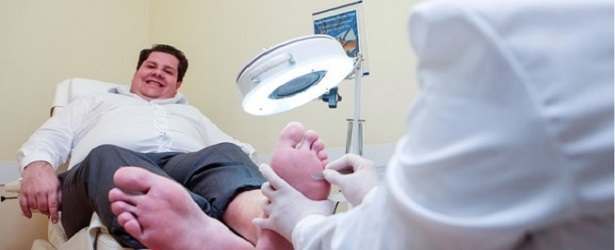

 Always dry your feet thoroughly after you wash them. Wait a few minutes after they have dried before you put shoes or socks on your feet. You can use the warm function on a hair dryer to remove any moisture from your feet. You may also consider using an anti-fungal foot powder to help keep them dry throughout the day.
Always dry your feet thoroughly after you wash them. Wait a few minutes after they have dried before you put shoes or socks on your feet. You can use the warm function on a hair dryer to remove any moisture from your feet. You may also consider using an anti-fungal foot powder to help keep them dry throughout the day. If you become infected with athlete’s foot, you can consider several ways of treating it. There are
If you become infected with athlete’s foot, you can consider several ways of treating it. There are 
 Conventionally, your doctor will most likely prescribe some sort of medicated powder or gel that you will apply daily with the desired effect being that your athlete’s foot will be cleared within a couple of weeks. In a lot of cases this is an adequate solution and does indeed clear up the problem. However, due to the fact that these over-the-counter medicines are unnatural and manufactured, they can actually have an adverse effect on the body. Manufactured medicines contain chemicals that are often harsh on your skin and the burning sensation that you feel from your athlete’s foot could just be replaced with a different burning feeling, caused by the chemicals. Caution is always advised when considering taking any new medication, especially manufactured ones and especially ones you apply to your skin.
Conventionally, your doctor will most likely prescribe some sort of medicated powder or gel that you will apply daily with the desired effect being that your athlete’s foot will be cleared within a couple of weeks. In a lot of cases this is an adequate solution and does indeed clear up the problem. However, due to the fact that these over-the-counter medicines are unnatural and manufactured, they can actually have an adverse effect on the body. Manufactured medicines contain chemicals that are often harsh on your skin and the burning sensation that you feel from your athlete’s foot could just be replaced with a different burning feeling, caused by the chemicals. Caution is always advised when considering taking any new medication, especially manufactured ones and especially ones you apply to your skin.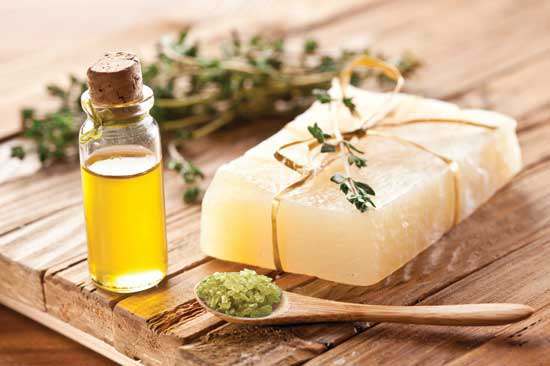 There are many alternatives available to remedy your athlete’s foot. Firstly, you should consider how to upset the ideal conditions for the fungus to grow in. The fungus thrives in warm, damp conditions, hence why it is most commonly found on the feet and groin area. So in order to treat it, it could be as simple as ensuring you wash your feet regularly, wear clean cotton socks and clean shoes that are changed daily. It is also important that you expose your feet to sunlight regularly and avoid having them in closed shoes all the time. Skin needs to breath and this applies to whole body, including your feet. These personal hygiene habits, accompanied by the use of
There are many alternatives available to remedy your athlete’s foot. Firstly, you should consider how to upset the ideal conditions for the fungus to grow in. The fungus thrives in warm, damp conditions, hence why it is most commonly found on the feet and groin area. So in order to treat it, it could be as simple as ensuring you wash your feet regularly, wear clean cotton socks and clean shoes that are changed daily. It is also important that you expose your feet to sunlight regularly and avoid having them in closed shoes all the time. Skin needs to breath and this applies to whole body, including your feet. These personal hygiene habits, accompanied by the use of 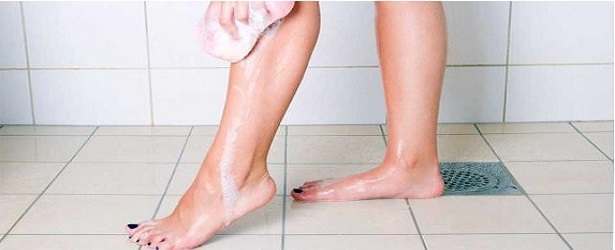
 Athlete’s foot is a condition derived from a fungus. You might find that hard to believe, but a quick science lesson on trichophyton will tell you that yes, it is a fungus that thrives in warm and moist conditions, hence why it is prominent between toes and around the groin area. Given the right conditions it will grow, and continue to grow until the conditions are improved and made less favourable.
Athlete’s foot is a condition derived from a fungus. You might find that hard to believe, but a quick science lesson on trichophyton will tell you that yes, it is a fungus that thrives in warm and moist conditions, hence why it is prominent between toes and around the groin area. Given the right conditions it will grow, and continue to grow until the conditions are improved and made less favourable. It is fair to say that athlete’s fFoot is a condition that is very much in the patient’s own hands as well as on their feet. If treated early enough, you can avoid complications that would result in a trip to your doctor.
It is fair to say that athlete’s fFoot is a condition that is very much in the patient’s own hands as well as on their feet. If treated early enough, you can avoid complications that would result in a trip to your doctor.

 #3 Spices
#3 Spices #4 Pumpkin Seeds
#4 Pumpkin Seeds

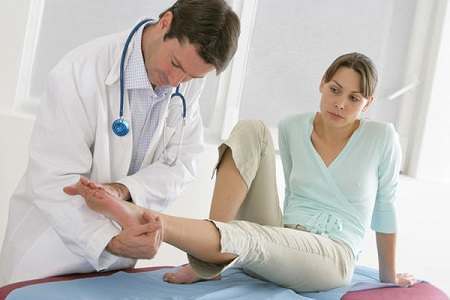 Pre-existing Conditions
Pre-existing Conditions
 Warnings
Warnings Step 1
Step 1 Step 2
Step 2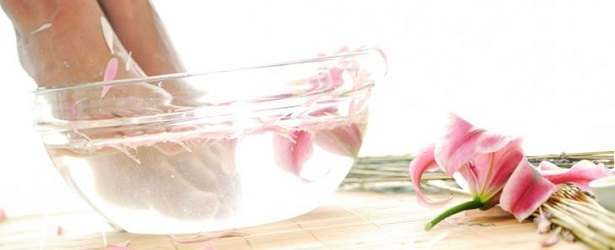
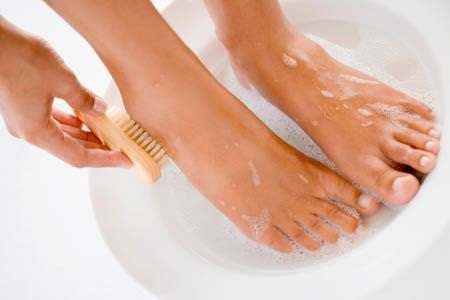 Self-Care
Self-Care Medications
Medications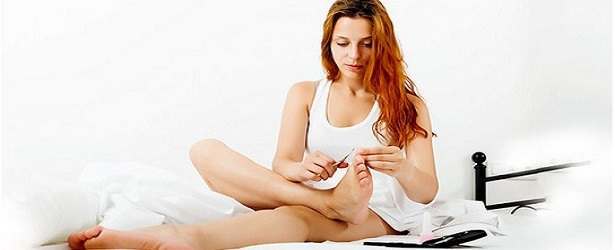
 Mustard Powder
Mustard Powder